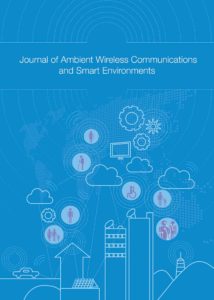
Editor-in-Chief: Fernando José Velez, Instituto de Telecomunicações Departamento de Engenharia Electromecânica / Universidade da Beira Interior, Portugal
Editorial Board
- Claudia Carciofi, Fondazione Ugo Bordoni, Italy
- Elvino de Sousa, University of Toronto, Canada
- Kamya Yekeh Yazdandoost, NICT, Yokosuka, Japan
- Lina Brito, Universidade da Madeira, Funchal, Portugal
- Luca De Nardis, DIET Department, Sapienza University of Rome, Rome, Italy
- Neeli Prasad, CTIF, University of Aalborg, Aalborg, Denmark
- Nguyen H. Tran, Kyung Hee University, Gyeonggy, Korea
- Nuno Borges de Carvalho, Instituto de Telecomunicações, Universidade de Aveiro, Portugal
- Periklis Chatzimisios, Alexander TEI of Thessaloniki, Thessaloniki, Greece
- Raul Chavez-Santiago, The Intervention Center, Oslo University Hospital, Oslo, Norway
- René Jr. Landry, École de Technologie Supérieure, Montréal, Canada
- Rodolfo Oliveira, Nova University of Lisbon, Instituto de Telecomunicações, Lisbon, Portugal
Smart environments (SEs) and ambient intelligence aim at providing the right service in a timely, unobtrusive and friendly manner. Recently, there has been a shift in the design of such systems that tries to include the user in the loop of decision making. In the conception of smart systems it is essential to gather the appropriate information to provide the required service. This implies taking advantage of both physical and virtual sensors that happen to be in the environment and make part of everyone’s daily life.
SEs, like cutting-edge technology medical settings, energy efficient buildings, vehicular or urban automated environments, are therefore populated by many devices connected by wireless sensor and actuator networks (WSANs). These environments are defined by a variety of different characteristics based on the applications they serve, their interaction models with humans and machines, the practical system design aspects that would enable them to operate seamlessly, unobtrusively and securely.
Aims and scopes:
Ambient Wireless Communications and Smart Environments will publish original, high quality, peer-reviewed research papers and review articles dealing with wireless communications in smart environments and ambient intelligence.
Journal of AMBIENTCOM also welcomes technologic oriented papers for its Section of Recent Experimental Results: methodologies, procedures, characterisation and implementation aspects, assessment and evaluation (both from industry and academia).
The Journal of Ambient Wireless Communications and Smart Environments focus on both the technical and application aspects of wireless communication networks for SEs, ambient intelligence and WSANs, giving emphasis but not limited to the following topics:
- Ambient intelligence for smart home environments;
- Ambient wireless networks;
- Applications and real life user experience with deployed systems and prototypes;
- Applications in health care, smart homes, surveillance, observation, industrial smart metering, machine-to-machine communications and smart buildings;
- Automatic configuration of applications for smart environments and end-user support;
- Coexistence of WSANs with other wireless technologies;
- Cognitive radio and spectrum sharing aspects;
- Context and social-aware applications;
- Context models;
- Context awareness, sensing, and inference for ambient intelligence;
- Cross-layer design and layer optimization in WSANs;
- Distributed intelligence in distributed sensors;
- Emerging radio technologies (UWB, millimetre wavebands, etc.)
- Energy harvesting for smart sensors and lifetime of WSANs;
- Human-centred interfaces, intelligent agents, multimodal interaction and the social interactions of objects in environments;
- Innovative architectures for smart sensors and actuators;
- Mobile and pervasive computing in smart environments;
- Mobile/wearable intelligence;
- Modelling and simulation in WSANs;
- Modelling of environments (homes, hospitals, transportation, roads, offices, classrooms, museums, etc.);
- Protocols and algorithms for the PHY, MAC and network layer;
- Radio Frequency Identification (RFID) technology and applications;
- Recent standardization activities;
- Regulatory and techno-economic issues;
- Robotics applied to smart environments and living assistance;
- Sensor data fusion and collaboration in multi-sensor systems and networks;
- Sensors and networks;
- Smart cities;
- Smart cognitive radio transceiver design;
- Sustainable communication systems and infrastructure for ambient intelligence;
- Use of mobile, wireless, visual, and multi-modal sensor networks in intelligent systems;
- Ubiquitous and ambient display environments.
Submission: http://riverpublishers.com/journal/login.php
Authors’ Guideline: http://riverpublishers.com/authors.php